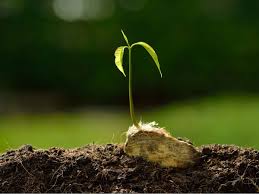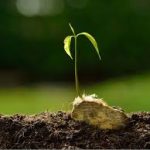
Indoor gardening is a delightful way to bring nature into your home, and starting with indoor plant seeds is the perfect step for a thriving indoor oasis. Whether you’re new to gardening or looking to expand your green thumb, this guide covers everything from seed selection to nurturing healthy plants.
Why Choose Indoor Plant Seeds?
Indoor plant seeds offer unmatched versatility and variety. From decorative houseplants to vegetables and herbs, you can grow whatever suits your space and style. Plus, starting from seeds is cost-effective and rewarding as you watch your plants flourish from the very beginning.
Essential Supplies for Growing Indoor Plant Seeds
Before diving in, gather these key supplies to ensure a successful gardening journey:
1. Seed-Starting Compost
- Use Westland Compost, a premium blend designed for optimal growth. Its fine texture and nutrient-rich composition provide the perfect environment for delicate seeds.
2. Potting Grit
- Add potting grit to improve drainage and aeration, ensuring your seeds don’t become waterlogged.
3. Containers and Trays
- Choose seed trays, small pots, or upcycled containers with drainage holes.
4. Labels and Markers
- Keep track of your seeds with clear labels, especially if you’re growing a mix of indoor plants or vegetables.
Step-by-Step Guide to Growing Indoor Plant Seeds
Step 1: Select the Right Seeds
Choose seeds suited to your indoor environment. Popular options include:
- Herbs: Basil, coriander, parsley
- Vegetables: Lettuce, spinach, cherry tomatoes
- Houseplants: Monstera, ferns, peace lilies
Step 2: Prepare the Growing Medium
- Fill your containers with Westland Compost, leaving about 1 cm at the top.
- Add a thin layer of potting grit for better drainage.
Step 3: Plant the Seeds
- Read the seed packet for specific instructions.
- Plant seeds at the recommended depth, typically twice their size.
- Space them out to avoid overcrowding.
Step 4: Water Gently
- Use a spray bottle to mist the soil lightly. Avoid overwatering as it may lead to fungal growth.
Step 5: Provide Adequate Light
- Place containers in a well-lit area with indirect sunlight. If natural light is limited, consider using grow lights.
Step 6: Maintain Humidity and Temperature
- Cover trays with a clear plastic lid or cling film to retain moisture.
- Keep the temperature around 18–21°C for most seeds to germinate.
Caring for Your Seedlings
Once your seeds sprout, proper care is crucial to ensure healthy growth:
Thin Out Seedlings
- If multiple seeds sprout in one container, thin them out to prevent overcrowding. Select the strongest seedling and gently snip the others at soil level.
Feed and Water Regularly
- Use a balanced liquid fertiliser once seedlings develop their first true leaves.
- Water when the topsoil feels dry to the touch, but avoid waterlogging.
Transplant When Necessary
- Once your seedlings outgrow their containers, transplant them into larger pots with bark compost to support further growth.
Top Tips for Successful Indoor Gardening
- Rotate Containers: Turn pots every few days for even light exposure.
- Keep Pests Away: Watch for common pests like aphids and treat them promptly.
- Experiment: Don’t hesitate to try different plants or growing techniques.
Where to Buy Indoor Plant Seeds and Supplies
Looking for quality indoor plant seeds and gardening essentials? Visit FitFit Garden for a wide selection of seeds, compost, and tools tailored to indoor gardening needs.
Explore More Gardening Solutions
Enhance your indoor gardening experience with these resources:
- Multi-Purpose Compost: Perfect for all-round gardening.
- Peat-Free Compost: Sustainable and eco-friendly options.
- Slug and Snail Control: Keep your plants safe from pests.
Conclusion
Growing indoor plant seeds is a fulfilling hobby that brings life and beauty into your home. By using the right supplies like Westland Compost and potting grit, you’ll create the perfect environment for your seeds to thrive. Start your journey today with FitFit Garden and discover the joy of indoor gardening!





Leave a Reply